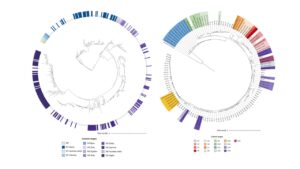
Jennifer’s paper is live!
Jennifer Wen, a former SEAS Master’s student in the Zak lab, now has a paper out titled “Ammonium oxidation by bacteria and archaea have functional implications for nitrification across a forested landscape”. This work draws on her thesis work on the amoA gene of archaea along a natural nitrogen mineralization gradient, but it expanded the scope to include ammonia-oxidizing bacteria in the same system. The amoA gene encodes for the gene that is the first step in nitrification, which converts ammonium (NH3+) to nitrite (NO2-), and understanding the diversity and composition of this gene can give us a better understanding for how nitrogen moves through the system. Using self-generated primers, Jennifer found that there were distinct communities across the sites and two environmental variables, soil pH and nitrogen mineralization, were significantly related to the community composition. The paper is out in Ecosphere and can be found here ...
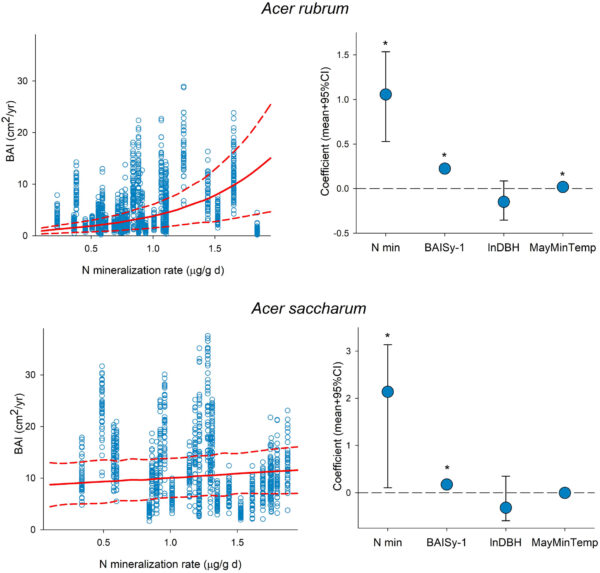
Morgan’s paper is out!
Morgan McPherson, a joint post-doctoral scholar in the Zak and Ibáñez lab at SEAS, has a new paper out titled “Arbuscular mycorrhizal diversity increases across a plant productivity gradient driven by soil nitrogen availability”. This study characterized the arbuscular mycorrhizal fungi (AMF) in soils across a plant productivity gradient, coinciding with a nitrogen mineralization gradient. The soils were associated with Red and Sugar Maple trees in Manistee National Forest, which are known AMF host species. AMF-specific 18S rDNA targeted-gene libraries were constructed using in-lab designed primers to examine the communities and diversity of AMF. Their diversity significantly increased along the productivity gradient, which may be a response to increase carbon allocation from the increased plant growth. These results increase our understanding of the complex symbiosis and turnover of AMF and their interaction with host–plant performance. The paper is out in Plant-Environment Interactions and can be found here ...
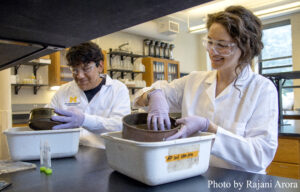
Aspirnaut Olises Perez in the Zak lab
This summer the Zak lab had the opportunity to host Olises Perez as part of the Aspirnaut program. The Aspirnaut Summer Research Internship Program, administered by Life Sciences Institute (LSI), brings rising Michigan high school seniors to UM to give them hands-on lab experience over a 6-week period. The goal is to encourage students, especially those in disadvantaged communities, to strive for education and careers in various STEM fields. Each Aspirnaut works with a mentor to conduct their own research, then presents their results to their peers and other mentors. The project that Olises worked on while in the Zak lab, focused on discovering whether or not Red Oak root tips had more than one type of mycorrhizal associations. Red Oaks are known to host ectomycorrhizal fungi (ECM) on their root tips, and in fact mostly thought to only host ECM. Olises set out to determine if arbuscular mycorrhizae fungi (AMF) were also present in the DNA for these root tips. Morgan McPherson, a postdoctoral scholar in the Zak lab, acted as Olises mentor while at the University. She has an extensive background studying AMF and worked closely with Olises to help him learn the molecular skills needed to examine his question. Amazingly there were 54 out of 106 Red Oak root tips that had AMF! Thank you to Olises for being a great addition to the Zak lab this summer and thank you Morgan for being an awesome mentor ...
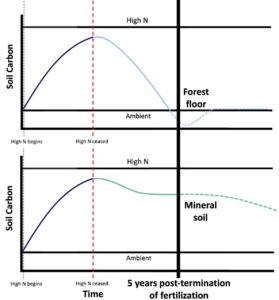
Zak lab paper out!
Brooke Propson, a PhD student at the University of Wisconsin, whom works in Zac Freedman’s lab (former Zak lab post-doc), studied the ecosystem response and recovery after the long-term elevated nitrogen treatment was stopped. There is also a natural gradient of ambient N deposition due to human activity at these sites, as well. The study showed that the C in the organic horizon that has previously accumulated from N-treatment has been lost with added deficits post-termination of the treatment with the exception of the northernmost site (least ambient N), showing a shift in mechanistic microbial activity. The mineral soil C still remained observable even after the 5-year termination of the treatment (though not significant). They concluded that most likely the sites are in a disturbed state and will most likely still exhibit higher levels of C storage overtime. The paper is out now and can be found here ...
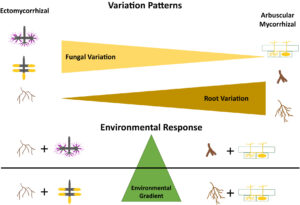
Zak lab paper out!
Sam Schaffer-Morrison, former SEAS student and current PhD in EEB at Michigan, has a review out with Don that argues that functional traits of mycorrhizal fungi should be included for consideration when belowground functional traits are being examined. These are incredibly important symbionts could add key mechanistic factors for plant performance (via nutrient uptake) if included in plant-soil discussions. They propose several key fungal traits that are measurable and ways to incorporate them into future research. This paper is out in Ecosphere here ...
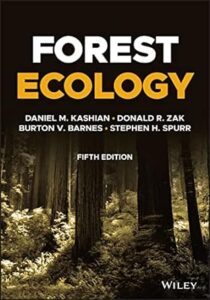
Forest Ecology Out!
A revised 5th edition of Forest Ecology (ISBN 1119476089) is out now! Don is one of the co-authors. It has been 25 years since the previous edition and the authors wanted to retain the overall focus from the previous edition (ecosystem level), but update the text to include information about new ecological concepts and methods, and critical areas interest like sustainability. Don took a lot of care (and an enormous investment in time) to update the text, images and references for all the chapters that he worked on. It’s out now and you can get it most book sellers (and there is a PDF version). Congrats Don for a job well done! ...
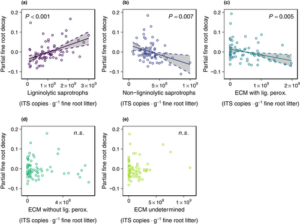
Will’s paper is out
Will Argiroff, former PhD student in SEAS, has a new paper out titled “Fungal community composition and genetic potential regulate fine root decay in northern temperate forests” that examined if fine root litter (~50% total litter production in forest ecosystems and fairly recalcitrant) decayed more rapidly when fungal communities have more genes that are known to degrade litter. The study also looked into if you could classify fungi by saprotrophic or ectomycorrhizal functional groups by the genes present. Fine roots were placed in forest sites and the fungal communities were sequenced, which where then compared to available fungal genomes to examine decay genes. Fine root decay occurred more rapidly where fungi had more decay genes and was correlated with saprotrophs that degrade lignin (negatively so with ECM). The paper is out in Molecular Ecology can be found here ...
Welcome Morgan!
Morgan McPherson is jointly joining the Zak lab and Ibanez lab (SEAS) for an NSF-funded post-doc to study arbuscular mycorrhizae in our sites in the Manistee National Forest. She comes to us from the University of Nebraska-Lincoln, where she studied AMF in agroecosystems. Welcome Morgan!! ...